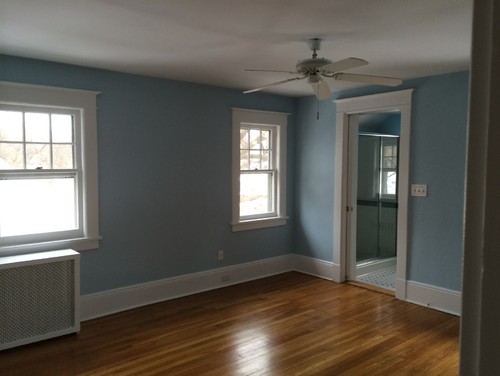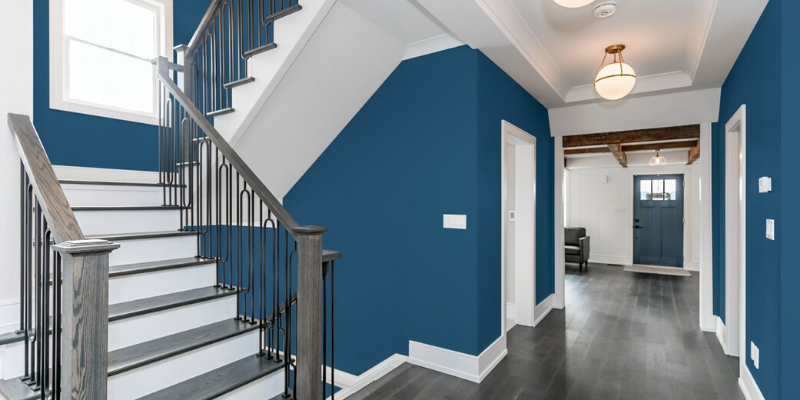Reliable Lakewood Interior Painting Services for Long-Lasting Results
Enhance Your Inside Design With Comprehensive Shade Consultation
The combination of shade assessment right into interior design offers a distinct opportunity to improve and elevate the visual and psychological resonance of a room. By involving with a seasoned color specialist, you can navigate the complexities of shade choice, making certain that your selections not just complement building attributes yet also resonate with individual design and psychological impact.
Benefits of Shade Consultation

In addition, color assessment help in taking full advantage of all-natural light and maximizing spatial perception. Lighter shades can make a space show up even more large, while darker tones develop an intimate setting. Cleveland Metro Painting Specialists. This calculated application of shade can significantly influence the total ambiance of any type of indoor room
Furthermore, expert experts possess an extensive understanding of existing patterns and ageless standards, making certain that the picked shades will continue to be enticing in time. This foresight can save customers from expensive redesigns in the future. Ultimately, shade consultation equips clients by offering them with a clear vision and direction, fostering confidence in their design choices and inevitably leading to an extra enjoyable and successful interior layout end result.
Comprehending Shade Psychology
The relevance of shade psychology in interior decoration can not be overemphasized, as it explores the psychological and emotional effects that numerous hues can evoke in individuals. Colors can affect state of mind, actions, and also efficiency, making them a vital factor to consider in any type of layout job.
For example, cozy colors such as red, orange, and yellow are often connected with power and heat. They can boost sensations of enjoyment and convenience, making them suitable for social rooms like living cooking areas or areas. Conversely, amazing colors like blue, green, and purple tend to evoke calmness and peace, making them suitable for rooms or reflection locations.
Furthermore, the usage of neutral tones can create a balanced setting by permitting the bolder colors to stand out without frustrating the senses. Comprehending these mental impacts enables designers to produce spaces that not only look aesthetically pleasing yet likewise advertise emotional wellness.
Including color psychology right into interior design entails a thoughtful option of hues tailored to the designated function of each room, eventually improving the total experience for its passengers. This understanding is critical for attaining a unified and functional interior setting.
The Shade Wheel Described
It makes up primary shades-- red, blue, and yellow-- that can not be produced by mixing various other shades. Tertiary colors result from mixing a main and a second color, leading to hues such as red-orange and turquoise.
The color wheel helps designers understand the connections in between colors, consisting of complementary, similar, and triadic schemes. Complementary colors, located opposite each other on the wheel, produce vibrant contrasts that can stimulate a space. Analogous colors, located next off to each other, provide a harmonious and natural appearance. Triadic plans utilize 3 evenly spaced colors, supplying equilibrium and aesthetic interest.
Making use of the shade wheel in interior decoration not just boosts aesthetic allure but also evokes specific emotions and environments, making it an important reference for shade assessment. Understanding these connections eventually encourages developers to create rooms that are both visually exciting and practical.
Choosing the Right Combination
Often, selecting the ideal palette is a decisive factor in accomplishing an effective interior decoration job. A well-chosen color plan can combine a room, improve its features, and evoke preferred feelings. To start, consider the objective of the room. Different areas serve different features and call for palettes that mirror their designated usage; for example, peaceful colors such as soft blues or eco-friendlies function well in bed rooms, promoting relaxation.
Light can considerably change how colors appear, so it is essential to evaluate the space at different times of the day. A harmonious palette ought to match these functions, producing a cohesive look throughout the space.
When picking colors, use the 60-30-10 regulation, which recommends that 60% of the space should be a dominant shade, 30% a secondary shade, and 10% an accent shade. This proportion makes sure equilibrium and aesthetic rate of interest (Cleveland Metro Painting Specialists). Example shades on the wall surfaces before committing, as this permits you to see exactly how the tones interact with one an additional and the general setting they develop in find more your indoor style job.
Dealing With a Shade Specialist

When functioning with a shade specialist, the process commonly begins with a preliminary assessment. During this meeting, you'll discuss your vision, choices, and the existing components in your area. The expert will certainly evaluate your demands and might suggest specific color schemes anonymous that align with your objectives.
After establishing a direction, the specialist will offer examples and visual aids to help you visualize the suggested color schemes. This step is important, as shades can appear differently under differing lights problems.
Furthermore, a color consultant can direct you in picking complementary home furnishings, artwork, and devices to harmonize with your picked combination. By collaborating very closely, you can achieve a polished visual that elevates your insides and develops a welcoming ambience. Ultimately, the competence of a color specialist can considerably enhance the overall effect of your design project.
Final Thought
In summary, comprehensive color appointment offers as a crucial device for boosting interior layout. By leveraging specialist knowledge of color psychology and spatial characteristics, a customized color scheme can be established to stimulate particular emotions and produce a harmonious environment.
By involving with a skilled shade specialist, you can navigate the complexities of shade option, ensuring that your options not just enhance building features but likewise resonate with personal design and psychological impact. It consists of primary colors-- red, visit this site blue, and yellow-- that can not be developed by blending various other shades.The shade wheel helps designers realize the connections between shades, consisting of complementary, similar, and triadic plans.When selecting colors, use the 60-30-10 regulation, which suggests that 60% of the space should be a dominant shade, 30% an additional shade, and 10% an accent shade. By leveraging expert knowledge of shade psychology and spatial dynamics, a tailored color scheme can be created to stimulate certain emotions and develop an unified setting.